Abstract
The objective of this study was to examine the influence of N2 fixation and NO3−-N and urea-N assimilation on ion balance, uptake, and transport processes in soybean (Glycine max L. Merr.).
Inoculated plants were grown in Perlite supplied daily with nutrient solutions which contained zero-N, 10 and 20 millimolar NO3−-N, and 10 and 20 millimolar urea-N, and they were sampled 41, 76, and 151 days after transplanting. Total uptake of inorganic cations and anions was determined by analysis of tissue for K+, Ca2+, Mg2+, Na+, total N from NO3−, total S, H2PO4−, and Cl−. Differences in total inorganic cations (C) and inorganic anions (A) in plant tissue were used to estimate total carboxylate content.
Internal OH− generation resulting from excess cation uptake (net H+ excretion) by the roots accounted for more than 89% of the carboxylate accumulation in N2- and urea-fed plants, while OH− generation resulting from SO42− reduction accounted for less than 11%. Shoots contained over 89% of the total plant carboxylate content. Malate balanced about 75% of the excess inorganic cationic charge of the xylem sap; allantoate and aspartate balanced most of the remaining charge. These results indicate that carboxylates (primarily malate) are synthesized in roots of N2- and urea-fed plants and transported to the shoots in the xylem to maintain charge balance. The high malate concentration resulted in the C/N weight ratio of xylem sap from N2-fed plants being >2.0, even though 83% of the N was transported as allantoin and allantoic acid which have a C/N ratio of 1.0. The data emphasize that C and N content of N compounds should not be the sole basis for calculating the C/N weight ratio of xylem sap.
The C-to-A uptake ratio for plants supplied 10 millimolar NO3− ranged from 1.24 to 1.57 during development, indicating that internal OH− was generated both by excess cation uptake and by NO3− and SO42− reduction. The C-to-A uptake ratio for 20 millimolar NO3− -fed plants ranged from 0.86 to 0.96 during development, indicating a small net OH− efflux from the roots for support of excess anion uptake. On a seasonal basis, only 15% of the OH− generated during NO3− and SO42− reduction was associated with OH− efflux (excess anion uptake), while 85% was associated with carboxylate accumulation. The malate concentration in xylem sap from plants supplied 20 millimolar NO3− was only one-third that of N2- and urea-fed plants; however, it did balance 75% of the excess inorganic cationic charge. Potassium, recycling to accommodate excess anion uptake by 20 millimolar NO3-fed plants, was calculated to involve at most 17% of the total K+ absorbed during the 41- to 76-day growth interval.
Full text
PDF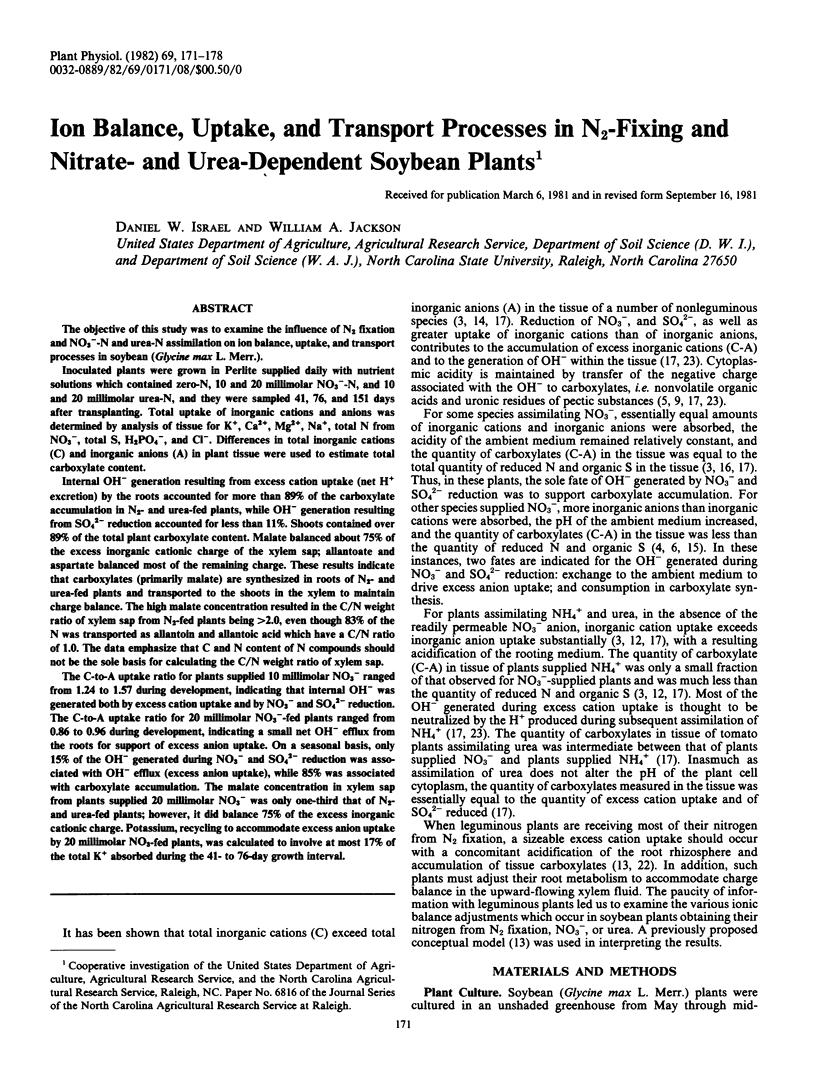
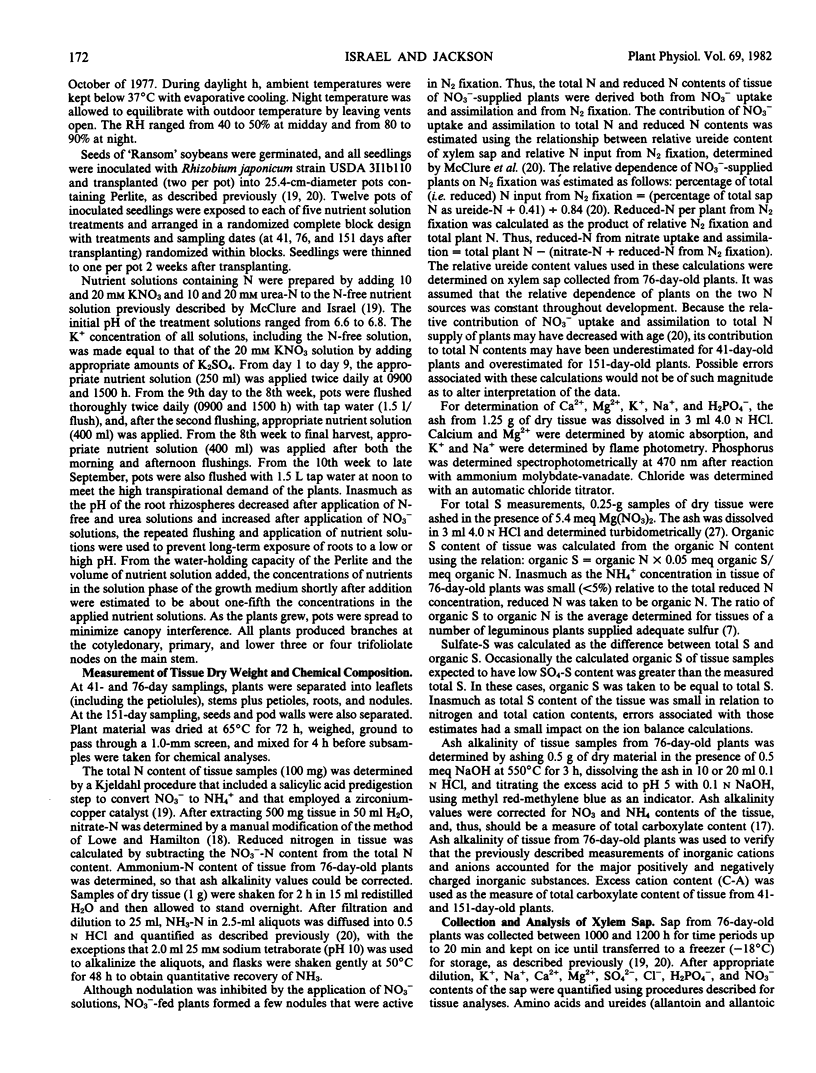
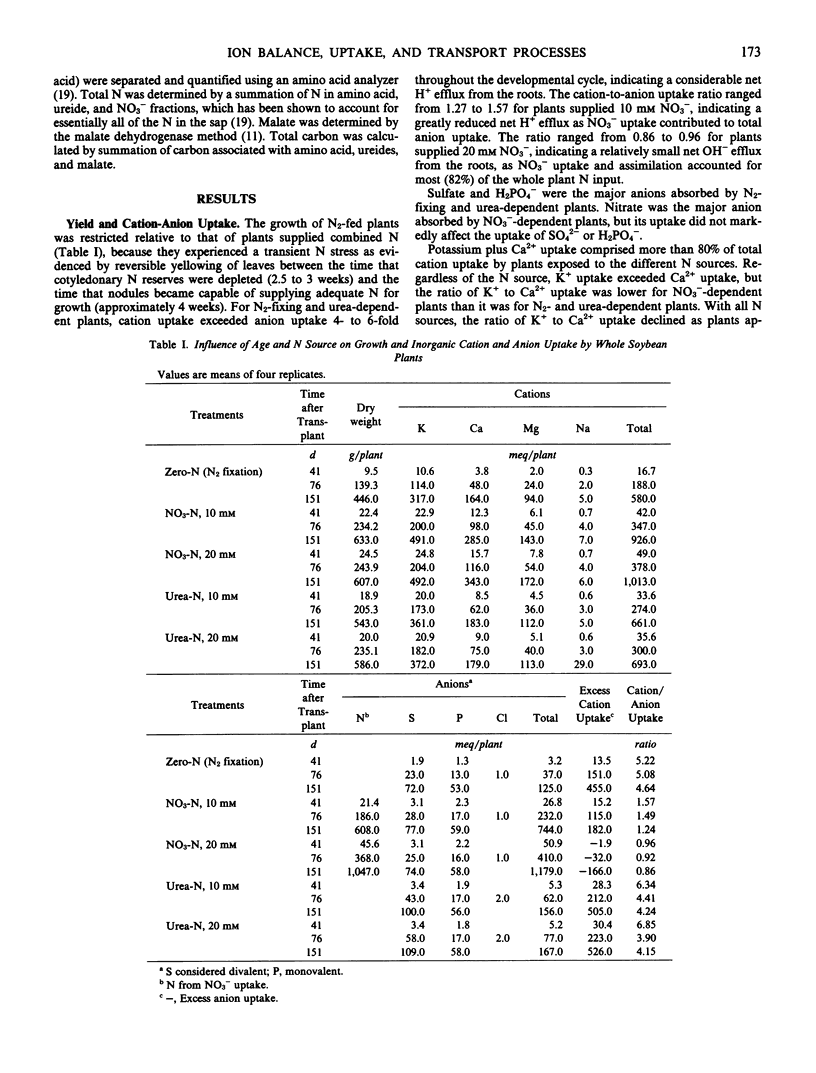
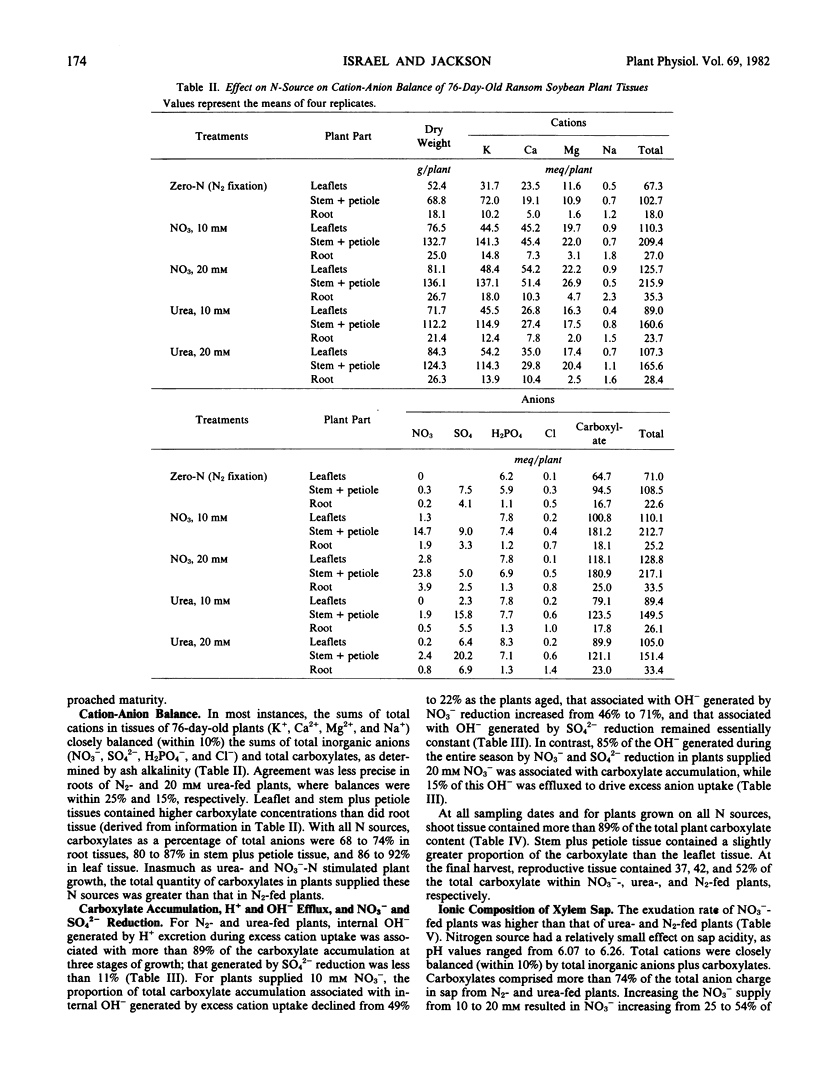
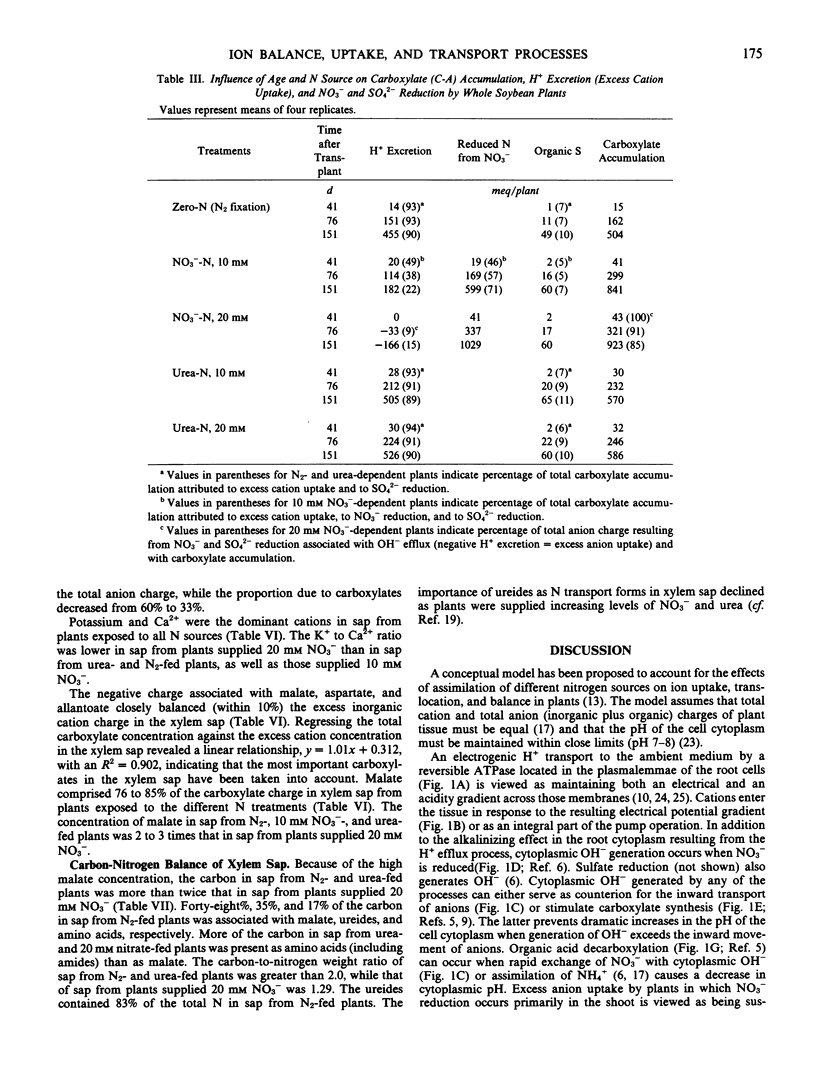
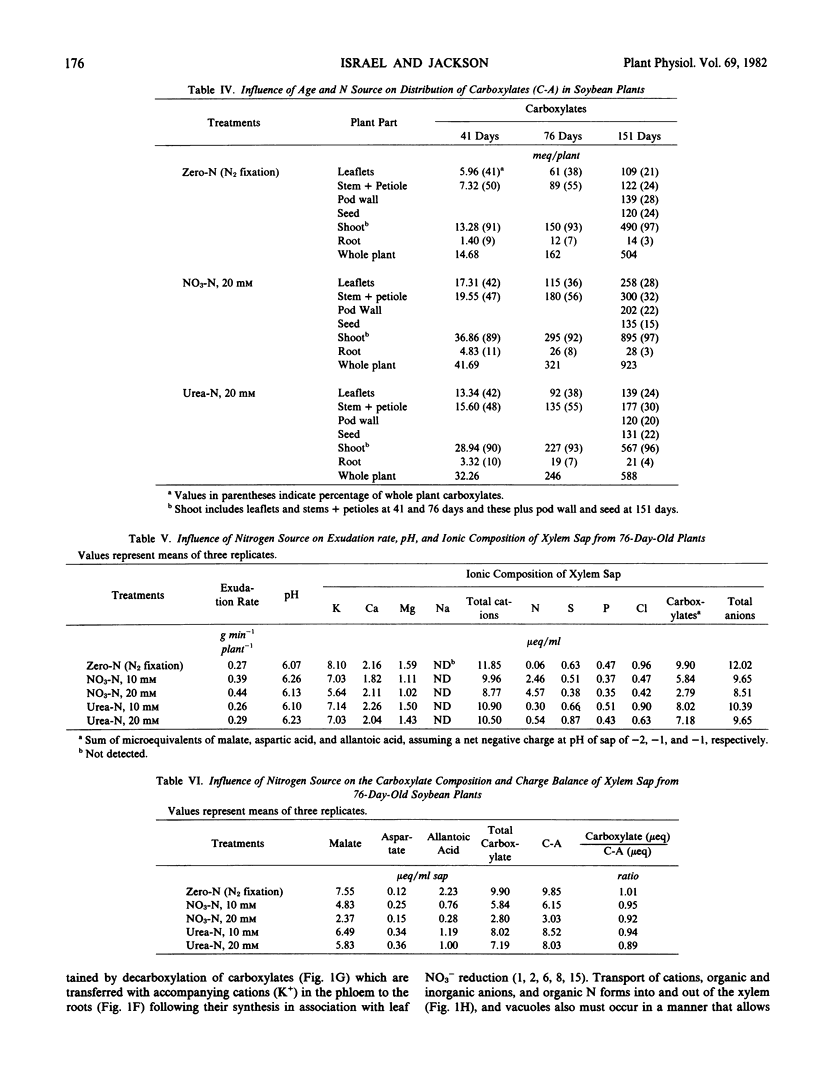
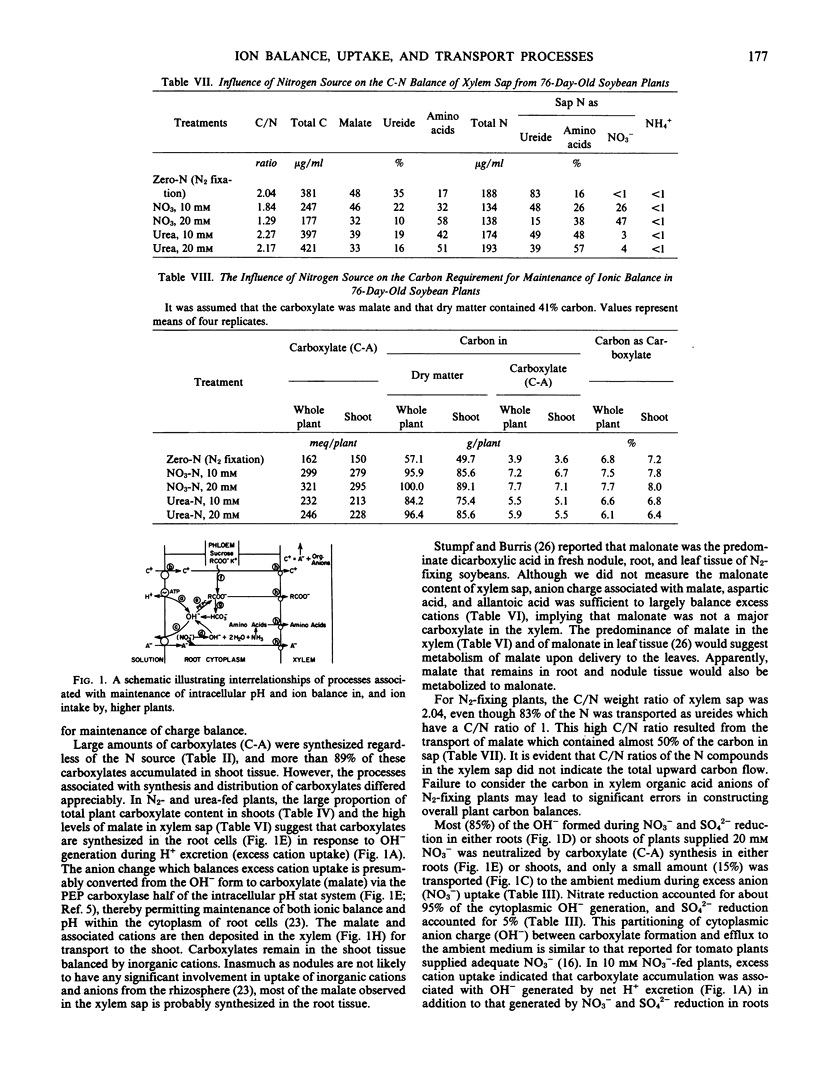
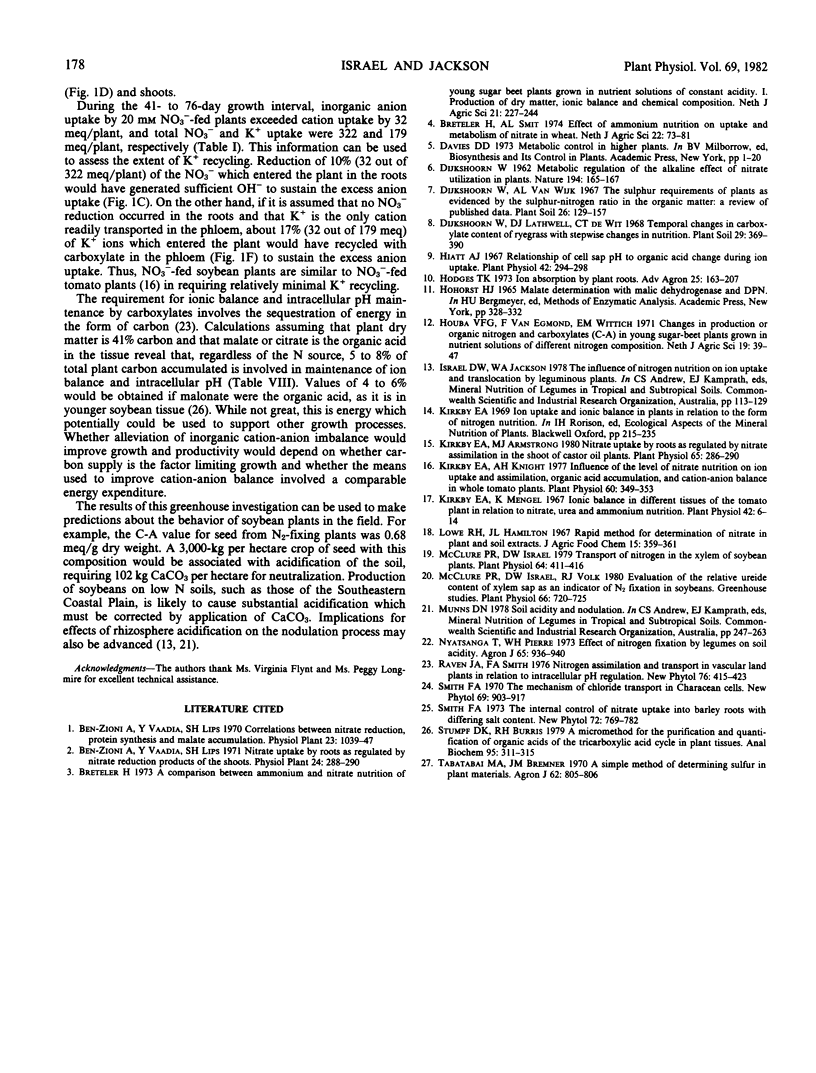
Selected References
These references are in PubMed. This may not be the complete list of references from this article.
- Hiatt A. J. Relationship of Cell Sap pH to Organic Acid Change During Ion Uptake. Plant Physiol. 1967 Feb;42(2):294–298. doi: 10.1104/pp.42.2.294. [DOI] [PMC free article] [PubMed] [Google Scholar]
- Kirkby E. A., Armstrong M. J. Nitrate uptake by roots as regulated by nitrate assimilation in the shoot of castor oil plants. Plant Physiol. 1980 Feb;65(2):286–290. doi: 10.1104/pp.65.2.286. [DOI] [PMC free article] [PubMed] [Google Scholar]
- Kirkby E. A., Knight A. H. Influence of the level of nitrate nutrition on ion uptake and assimilation, organic Acid accumulation, and cation-anion balance in whole tomato plants. Plant Physiol. 1977 Sep;60(3):349–353. doi: 10.1104/pp.60.3.349. [DOI] [PMC free article] [PubMed] [Google Scholar]
- Kirkby E. A., Mengel K. Ionic balance in different tissues of the tomato plant in relation to nitrate, urea, or ammonium nutrition. Plant Physiol. 1967 Jan;42(1):6–14. doi: 10.1104/pp.42.1.6. [DOI] [PMC free article] [PubMed] [Google Scholar]
- McClure P. R., Israel D. W. Transport of nitrogen in the xylem of soybean plants. Plant Physiol. 1979 Sep;64(3):411–416. doi: 10.1104/pp.64.3.411. [DOI] [PMC free article] [PubMed] [Google Scholar]
- McClure P. R., Israel D. W., Volk R. J. Evaluation of the Relative Ureide Content of Xylem Sap as an Indicator of N(2) Fixation in Soybeans: GREENHOUSE STUDIES. Plant Physiol. 1980 Oct;66(4):720–725. doi: 10.1104/pp.66.4.720. [DOI] [PMC free article] [PubMed] [Google Scholar]
- Stumpf D. K., Burris R. H. A micromethod for the purification and quantification of organic acids of the tricarboxylic acid cycle in plant tissues. Anal Biochem. 1979 May;95(1):311–315. doi: 10.1016/0003-2697(79)90221-5. [DOI] [PubMed] [Google Scholar]


